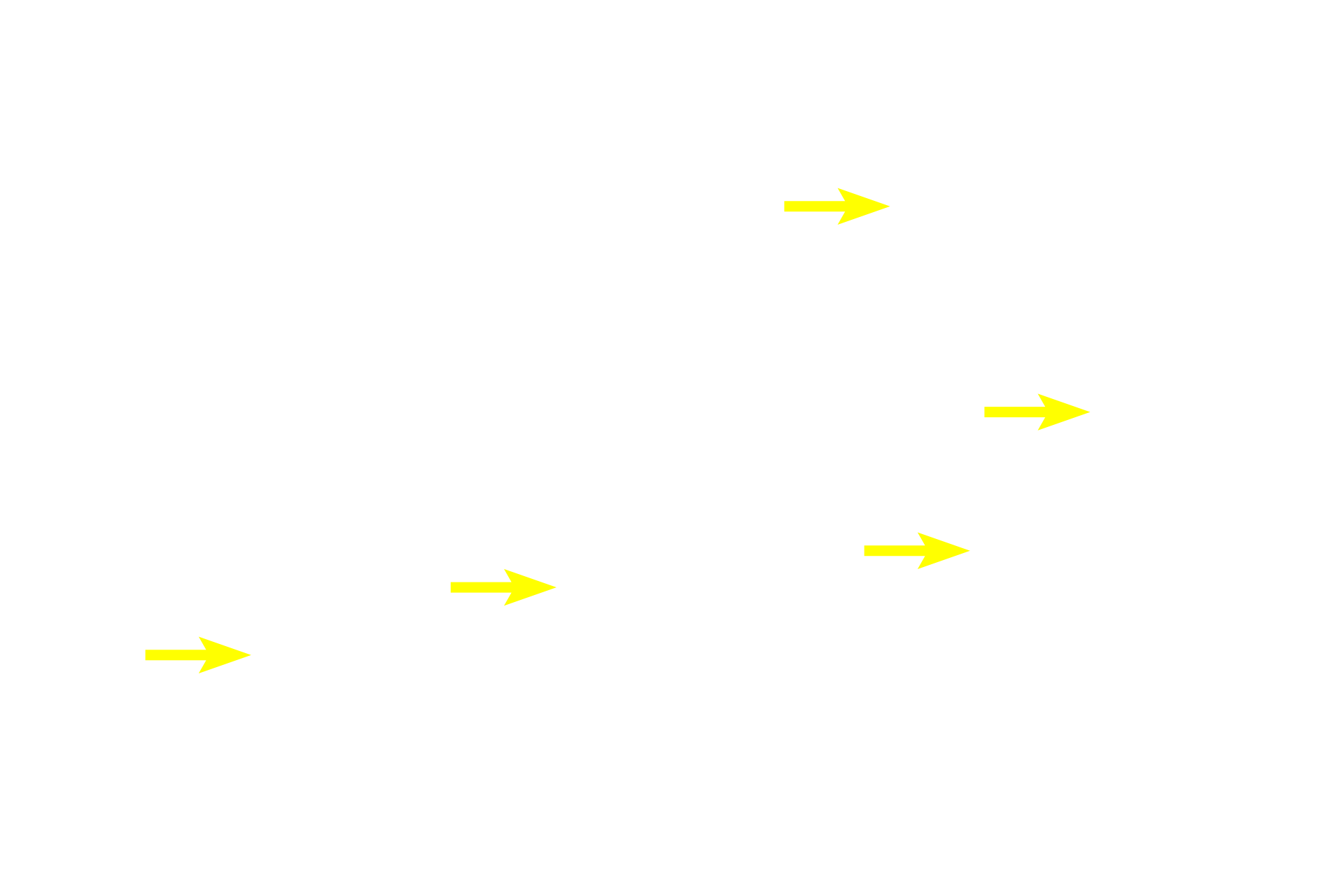
Thymus
The dark-staining cortex contains densely packed T-lymphocytes and is easily differentiated from the paler-staining medulla, where the lymphocytes are slightly more dispersed. The thymic stroma consists of a meshwork of epithelial reticular cells rather than a connective tissue, and hence, no fibers are present. One diagnostic feature of the thymus, Hassall’s corpuscles, are formed from epithelial reticular cells. 200x

Capsule
The dark-staining cortex contains densely packed T-lymphocytes and is easily differentiated from the paler-staining medulla, where the lymphocytes are slightly more dispersed. The thymic stroma consists of a meshwork of epithelial reticular cells rather than a connective tissue, and hence, no fibers are present. One diagnostic feature of the thymus, Hassall’s corpuscles, are formed from epithelial reticular cells. 200x

Trabeculae
The dark-staining cortex contains densely packed T-lymphocytes and is easily differentiated from the paler-staining medulla, where the lymphocytes are slightly more dispersed. The thymic stroma consists of a meshwork of epithelial reticular cells rather than a connective tissue, and hence, no fibers are present. One diagnostic feature of the thymus, Hassall’s corpuscles, are formed from epithelial reticular cells. 200x

Cortex
The dark-staining cortex contains densely packed T-lymphocytes and is easily differentiated from the paler-staining medulla, where the lymphocytes are slightly more dispersed. The thymic stroma consists of a meshwork of epithelial reticular cells rather than a connective tissue, and hence, no fibers are present. One diagnostic feature of the thymus, Hassall’s corpuscles, are formed from epithelial reticular cells. 200x

Medulla
The dark-staining cortex contains densely packed T-lymphocytes and is easily differentiated from the paler-staining medulla, where the lymphocytes are slightly more dispersed. The thymic stroma consists of a meshwork of epithelial reticular cells rather than a connective tissue, and hence, no fibers are present. One diagnostic feature of the thymus, Hassall’s corpuscles, are formed from epithelial reticular cells. 200x

Lymphocytes
The dark-staining cortex contains densely packed T-lymphocytes and is easily differentiated from the paler-staining medulla, where the lymphocytes are slightly more dispersed. The thymic stroma consists of a meshwork of epithelial reticular cells rather than a connective tissue, and hence, no fibers are present. One diagnostic feature of the thymus, Hassall’s corpuscles, are formed from epithelial reticular cells. 200x

Epithelial reticular cells
The dark-staining cortex contains densely packed T-lymphocytes and is easily differentiated from the paler-staining medulla, where the lymphocytes are slightly more dispersed. The thymic stroma consists of a meshwork of epithelial reticular cells rather than a connective tissue, and hence, no fibers are present. One diagnostic feature of the thymus, Hassall’s corpuscles, are formed from epithelial reticular cells. 200x

Hassall's corpuscles
The dark-staining cortex contains densely packed T-lymphocytes and is easily differentiated from the paler-staining medulla, where the lymphocytes are slightly more dispersed. The thymic stroma consists of a meshwork of epithelial reticular cells rather than a connective tissue, and hence, no fibers are present. One diagnostic feature of the thymus, Hassall’s corpuscles, are formed from epithelial reticular cells. 200x

Blood vessels
The dark-staining cortex contains densely packed T-lymphocytes and is easily differentiated from the paler-staining medulla, where the lymphocytes are slightly more dispersed. The thymic stroma consists of a meshwork of epithelial reticular cells rather than a connective tissue, and hence, no fibers are present. One diagnostic feature of the thymus, Hassall’s corpuscles, are formed from epithelial reticular cells. 200x

Area shown in next image
This area is shown at higher magnification in the next slide.